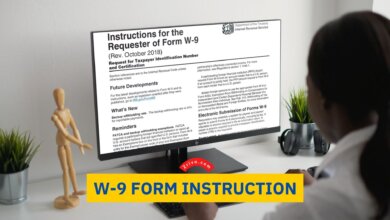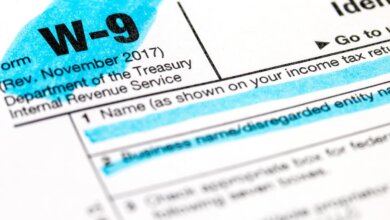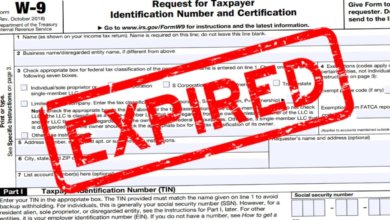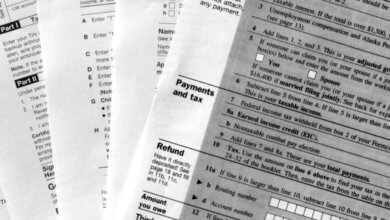W9 Form 2023 - 2024
The most common use of the W-9 form is in business–contractor arrangements. The IRS decides what changes need to be made to the W-9 form every year.
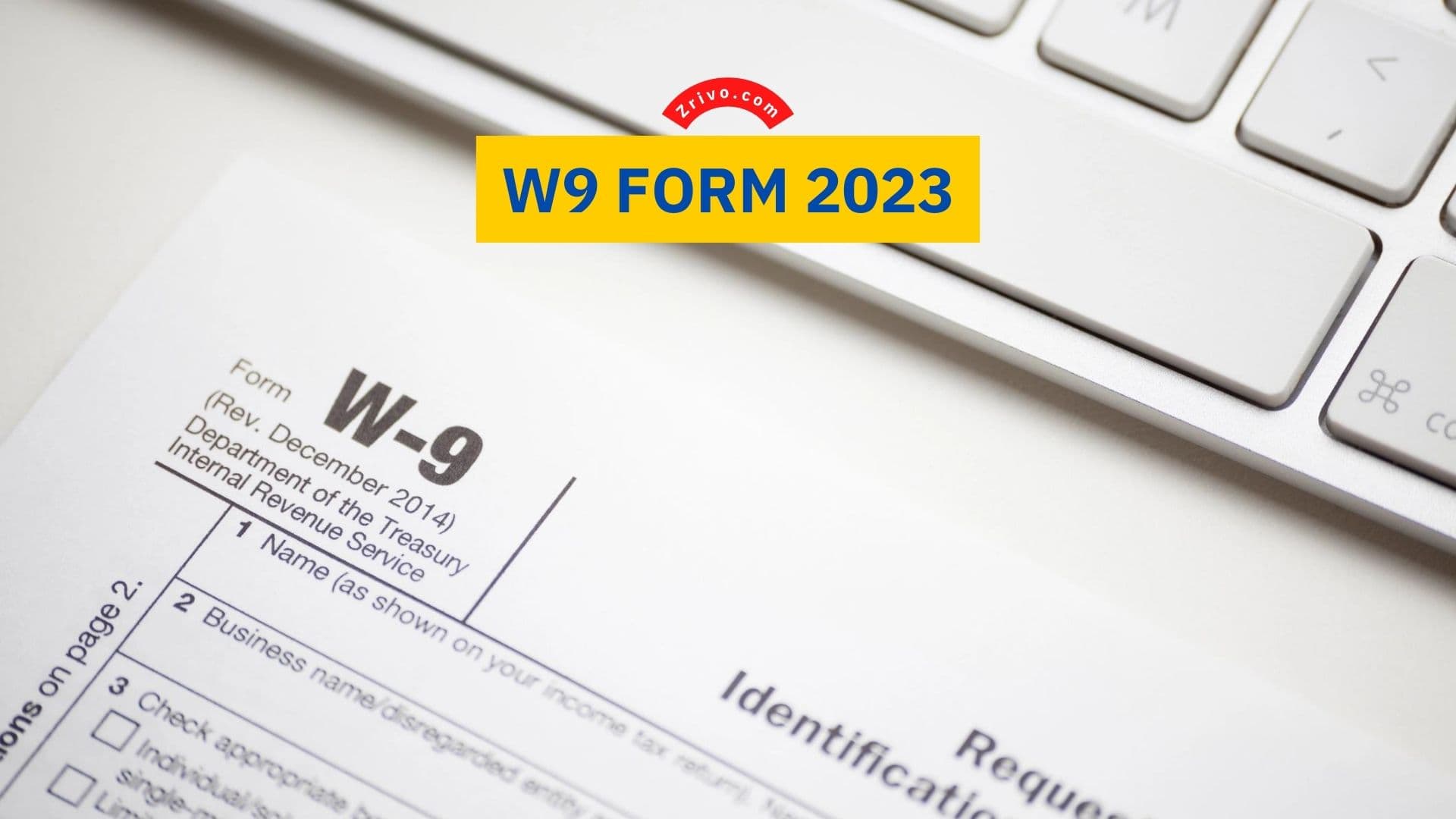
Contents
The W9 form is an important IRS form for independent contractors and gig workers to file taxes. But there have been some problems with the form lately. It is not clear when and if an update for the year 2024 will be released. This is why it is best to check the latest version as soon as you get it. The IRS does not announce updates to the W9 form very frequently. You can get a copy of the latest version online. It is likely to be updated in October or November.
What is a W9 Form?
The W9 form is a three-part document. Part one includes information about the vendor. Part two is for employees, and the third part is for non-employees. The details required are the same as the ones needed for the regular forms. You need to provide this information accurately.
The IRS Form W9 is used to report information about a business. This document lists the information the IRS needs to file a tax return. For instance, if a company hires you to work on their property, the IRS Form W9 will detail the amount of money that was paid by the customer. The form also lists the legal name of the business and the address. Employee identification numbers can be included on the form if it is a corporation.
The address is also important. It should include a street address and an apartment number. This way, the employer can send you notifications and information returns by mail. You should also include the city and ZIP code. After the address, fill in the account numbers. This is important because the IRS will require a business tax identification number.

How To Fill out the Form W9?
When you need to fill out a W9 form, you should know that there are a few important steps you should take. The first step is to make sure that you fill out the form correctly. You should fill in your full name and make sure that the spelling is correct. The name that you use should match the name on other tax forms. You should also fill out the business name field if your business has a different name.
A W9 form is an important document for any company that is doing business with freelance contractors. It requires the person to give the company their Social Security number and other information. It is required for companies that pay freelance workers or independent contractors more than $600. Even if you don’t have to send a W9 form to the IRS, you should still fill one out and store it for years to come.
After filling out the first and last lines, you can proceed to fill out the rest of the form. You should provide your full address, and you should also enter your account numbers, if applicable. Make sure you also include your social security number. This will allow the employer to mail you informational returns or notifications.
You should also remember that if you work for a company that requires a W9 form, you must be aware of situations when you should not fill out the form. This may include unexpected sources of W9 forms. If this happens, you should make sure that they are legitimate and have a good reason for sending you the form.
Completing the W-9 Form
Filling out a W-9 Form is a straightforward process. Here are the steps:
- Provide Personal or Business Information: Enter your full legal name or business name as it appears on your tax return. If you are a sole proprietor, use your individual name.
- Taxpayer Identification Number (TIN) or Social Security Number (SSN): Enter your TIN or SSN accurately. Providing a false TIN or SSN can result in severe consequences.
- Address: Include your current address.
- Type of Taxpayer: Check the appropriate box to indicate your taxpayer classification (e.g., individual, corporation, partnership).
- FATCA Certification: If you are not a U.S. citizen or resident, you may need to certify your FATCA status. Consult the instructions on the form for guidance.
Comparing W-9 Form to Other Tax Forms
| Comparison | W-9 Form | 1099 Form | W-2 Form | W-4 Form | W-8BEN Form | W-8 Form | Substitute W-9 | W-9 or W-8 |
|---|---|---|---|---|---|---|---|---|
| Purpose | Provides taxpayer information to the payer. | Used to report various types of income paid to individuals or entities. | Reports wages and taxes withheld for employees. | Determines withholding allowances for income tax purposes for employees. | Used by foreign individuals to claim tax treaty benefits. | Used by foreign entities to claim tax treaty benefits. | Used when a payee doesn’t provide a W-9; it’s an alternative form. | Depends on taxpayer status and type of income. |
| Completion Party | Payee (individual or business receiving payments). | Payer (business or individual making payments). | Employer (for employees). | Employee (to adjust withholding). | Foreign individuals receiving income in the U.S. | Foreign entities receiving income in the U.S. | Payer (when the payee doesn’t provide a W-9). | Depends on taxpayer status. |
| Timing | Completed before payments are made. | Generated after payments are made, typically at year-end. | Used for annual wage and tax reporting. | Completed by employees when starting a job or when tax situations change. | Completed before receiving certain U.S. income. | Completed before receiving certain U.S. income. | Completed when the payee doesn’t provide a W-9. | Depends on taxpayer status and type of income. |
| Tax Reporting | Provides taxpayer identification and certification. | Reports income paid to individuals or entities. | Reports employee wages and tax withholding. | Determines withholding for employee income. | Claims tax treaty benefits for foreign individuals. | Claims tax treaty benefits for foreign entities. | Provides payee information for tax reporting. | Depends on taxpayer status and type of income. |
| Backup Withholding | May lead to backup withholding if not provided. | Doesn’t result in backup withholding. | Not applicable; it reports wages and taxes withheld. | Not applicable; it determines withholding allowances. | May affect treaty benefits if not provided. | May affect treaty benefits if not provided. | Not applicable; it’s used when payee doesn’t provide a W-9. | Depends on taxpayer status and type of income. |
| Foreign Status | Typically used by U.S. taxpayers. | Used for U.S. and foreign income recipients. | Used by U.S. employees. | Used by U.S. employees. | Typically used by foreign individuals. | Typically used by foreign entities. | Typically used when payee is non-U.S. | Depends on taxpayer status. |
| Common Usage | For U.S. businesses and individuals providing services. | For businesses and individuals paying various types of income. | For employers and employees in the U.S. | For U.S. employees to adjust tax withholding. | For foreign individuals receiving U.S. income. | For foreign entities receiving U.S. income. | Used by payers when payees don’t provide a W-9. | Depends on taxpayer status and type of income. |
W-9 Form vs. 1099 Form
| Comparison | W-9 Form | 1099 Form |
|---|---|---|
| Purpose | Provides taxpayer information to a payer for reporting purposes. | Reports various types of income paid to individuals or entities. |
| Who Completes It | Individuals or businesses receiving payments. | Businesses or individuals making payments to others. |
| Timing | Completed before receiving payments. | Generated by payers after making payments. |
| Key Information | Taxpayer’s personal and business details, TIN, and certification. | Income amounts, recipient’s details, and type of income. |
| Consequences of Not Filing | Potential backup withholding by the payer. | Non-reporting of income to the IRS and potential penalties. |
| Common Usage | Freelancers, independent contractors, and businesses receiving payments. | Employers, businesses, and self-employed individuals making payments. |
W-9 Form vs. W-2 Form
| Comparison | W-9 Form | W-2 Form |
|---|---|---|
| Purpose | Provides taxpayer information to a payer for reporting purposes. | Used by employers to report wages and tax withholdings for employees. |
| Who Completes It | Individuals or businesses receiving payments. | Employers for their employees. |
| Timing | Completed before receiving payments. | Used throughout the year for payroll purposes. |
| Key Information | Taxpayer’s personal and business details, TIN, and certification. | Employee’s personal information, earnings, and tax withholdings. |
| Consequences of Not Filing | Potential backup withholding by the payer. | Incomplete or incorrect tax withholding and reporting. |
| Common Usage | Freelancers, independent contractors, and businesses receiving payments. | Employers and employees in the U.S. |
W-9 Form vs. W-4 Form
| Comparison | W-9 Form | W-4 Form |
|---|---|---|
| Purpose | Provides taxpayer information to a payer for reporting purposes. | Completed by employees to determine tax withholding allowances. |
| Who Completes It | Individuals or businesses receiving payments. | Employees when starting a new job or when their tax situation changes. |
| Timing | Completed before receiving payments. | Completed when starting a new job or when personal circumstances change. |
| Key Information | Taxpayer’s personal and business details, TIN, and certification. | Employee’s personal information, tax withholding allowances, and exemptions. |
| Consequences of Not Filing | Potential backup withholding by the payer. | Incorrect tax withholdings from paychecks. |
| Common Usage | Freelancers, independent contractors, and businesses receiving payments. | U.S. employees filling out their payroll information. |
W-9 Form vs. W-8BEN Form
| Comparison | W-9 Form | W-8BEN Form |
|---|---|---|
| Purpose | Provides taxpayer information to a payer for reporting purposes. | Used by non-U.S. individuals to claim treaty benefits and reduce withholding tax on U.S. income. |
| Who Completes It | Individuals or businesses receiving payments. | Non-U.S. individuals claiming treaty benefits or reduced withholding. |
| Timing | Completed before receiving payments. | Completed before income is earned. |
| Key Information | Taxpayer’s personal and business details, TIN, and certification. | Non-U.S. individual’s foreign status, treaty eligibility, and tax information. |
| Consequences of Not Filing | Potential backup withholding by the payer. | Increased withholding tax rates and potential non-compliance. |
| Common Usage | Freelancers, independent contractors, and businesses receiving payments. | Non-U.S. individuals receiving U.S. income. |
W-9 Form vs. W-8 Form
| Comparison | W-9 Form | W-8 Form |
|---|---|---|
| Purpose | Provides taxpayer information to a payer for reporting purposes. | Used by foreign individuals and entities to declare their foreign status and reduce withholding tax on U.S. income. |
| Who Completes It | Individuals or businesses receiving payments. | Foreign individuals and entities receiving U.S. income. |
| Timing | Completed before receiving payments. | Completed before income is earned. |
| Key Information | Taxpayer’s personal and business details, TIN, and certification. | Foreign individual’s or entity’s foreign status and tax information. |
| Consequences of Not Filing | Potential backup withholding by the payer. | Increased withholding tax rates and potential non-compliance. |
| Common Usage | Freelancers, independent contractors, and businesses receiving payments. | Foreign individuals and entities receiving U.S. income. |
Substitute W-9 vs. W-9
| Comparison | Substitute W-9 Form | W-9 Form |
|---|---|---|
| Purpose | A version of the W-9 Form created by a payer to collect taxpayer information. | Provides taxpayer information to a payer for reporting purposes. |
| Who Completes It | Individuals or businesses receiving payments. | Individuals or businesses receiving payments. |
| Timing | Completed before receiving payments. | Completed before receiving payments. |
| Key Information | Taxpayer’s personal and business details, TIN, and certification. | Taxpayer’s personal and business details, TIN, and certification. |
| Consequences of Not Filing | Potential backup withholding by the payer if required information is missing. | Potential backup withholding by the payer if required information is missing. |
| Common Usage | Payers use it as an alternative to the standard W-9 to collect the same information. | Taxpayers use it to provide their taxpayer information to payers. |
